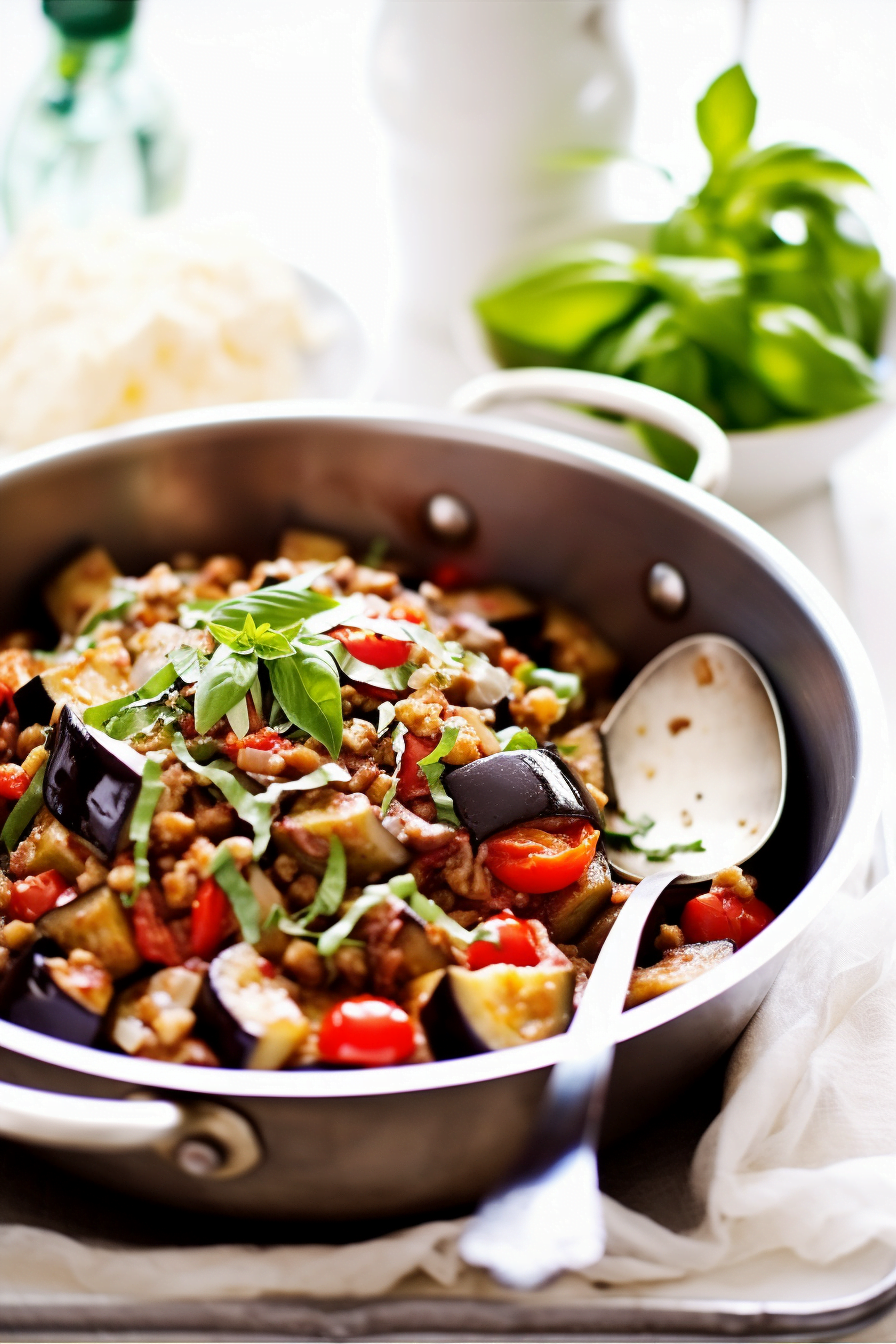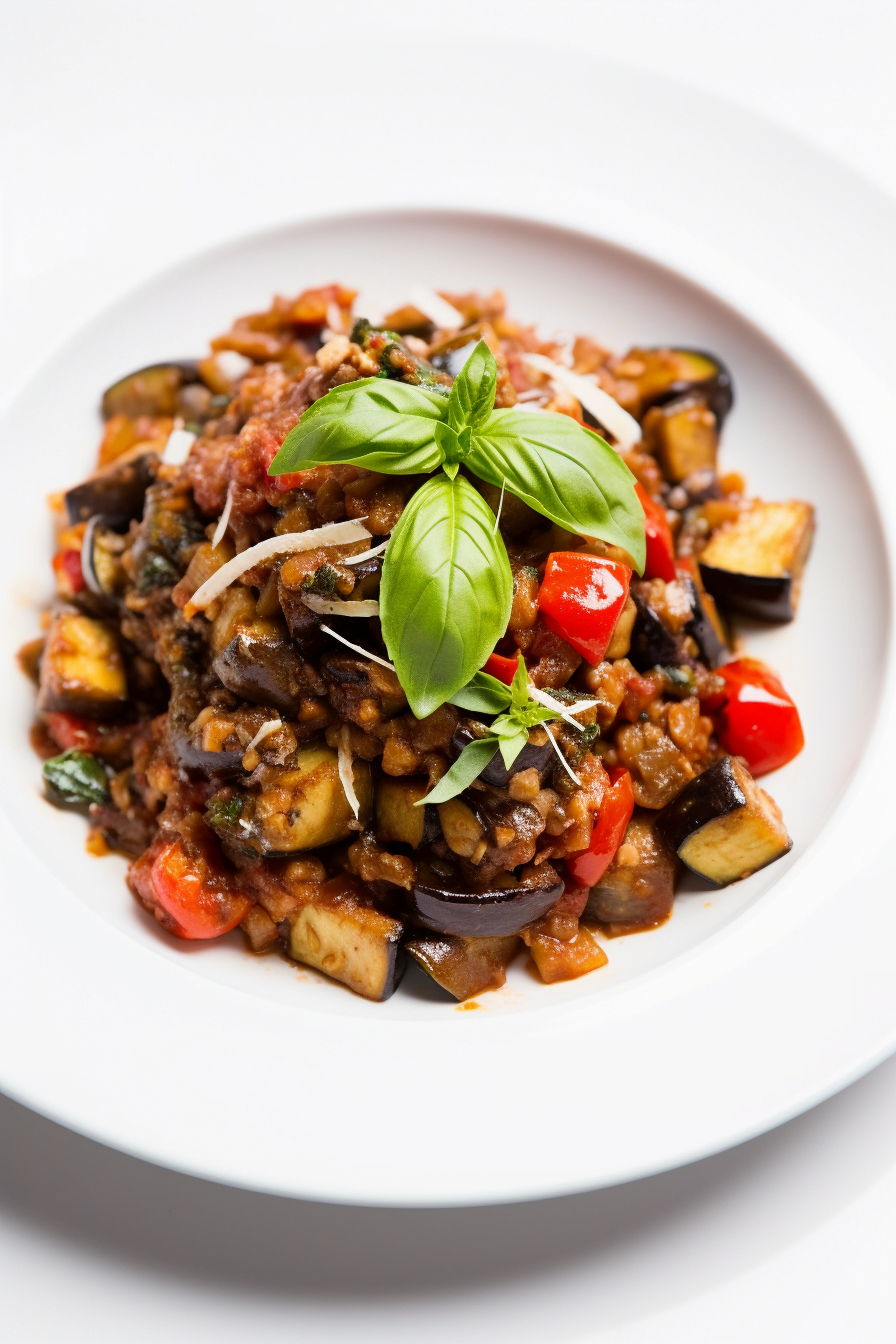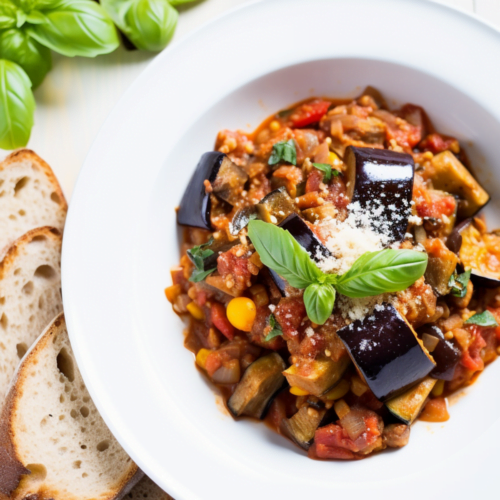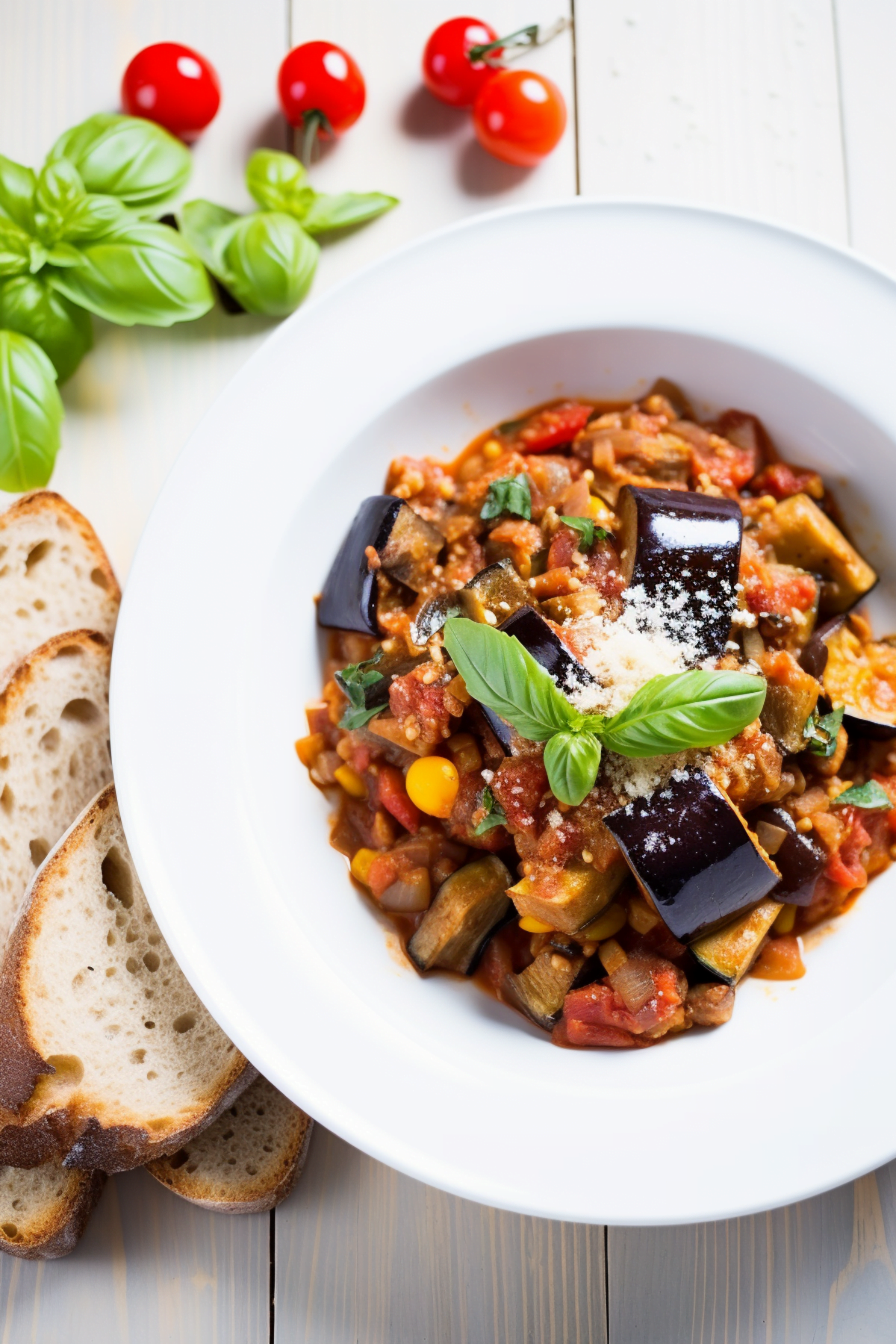Sicilian Caponata with Toasted Pine Nuts and Golden Raisins
Embark on a culinary journey to the heart of Sicily with this exquisite Sicilian Caponata with Toasted Pine Nuts and Golden Raisins. A dish that perfectly encapsulates the essence of Mediterranean flavors, this caponata is a symphony of sweet and sour notes, brought to life with the richness of pine nuts and the delightful chew of golden raisins. Whether you’re seeking a vibrant side dish or a versatile condiment, this recipe is sure to impress with its depth of flavor and nutritional benefits.
Let’s dive into the preparation of this traditional Sicilian delight, and discover how to bring the sun-drenched tastes of the Mediterranean to your table.

Recipe Details and Background
The Sicilian Caponata is a dish steeped in history, with its roots tracing back to the island’s diverse cultural influences. This rustic yet refined dish is a staple of Sicilian cuisine, often served as an appetizer or side. The caponata’s signature sweet and sour flavor, known as ‘agrodolce’, is a testament to the Arab influence on Sicilian cooking, showcasing the island’s historic role as a crossroads of Mediterranean civilizations.
Traditionally, the caponata is a celebration of the local harvest, featuring eggplants as the star, with a supporting cast of tomatoes, onions, and celery. The addition of toasted pine nuts and golden raisins elevates the dish, introducing a textural contrast and a layer of complexity to the flavors. These ingredients are not just a nod to Sicily’s bountiful produce but also reflect the island’s penchant for incorporating nuts and dried fruits into savory dishes.
Every family in Sicily has their own version of caponata, often passed down through generations. This recipe is inspired by the traditional preparations found in the bustling markets of Palermo, where the freshest local ingredients are transformed into culinary masterpieces. The caponata is more than just a dish; it’s a narrative of Sicily’s history, culture, and the ingenuity of its people.

The Method
The success of a caponata lies in the careful preparation and layering of flavors. Begin by **roasting the eggplant** until it’s tender and golden. This not only concentrates the eggplant’s flavor but also gives the caponata a robust foundation. Ensure the eggplant cubes are evenly coated with olive oil and seasoned well to enhance their natural sweetness.
While the eggplant roasts, focus on **building the base** of the caponata. Sauté the onions, celery, and bell pepper until they’re softened, which will take about 10 minutes. It’s crucial not to rush this step, as the vegetables should become sweet and tender, forming a flavorful backdrop for the other ingredients.
When you **add the garlic**, be mindful of its cooking time. Garlic burns easily and can become bitter, so a brief sauté until fragrant is sufficient. Following the garlic, the crushed tomatoes, red wine vinegar, and other ingredients join the skillet. This is when the magic happens, as the sweet, tangy, and savory elements combine to create the caponata’s signature agrodolce profile.
**Integrate the roasted eggplant** carefully, folding it into the simmering sauce to avoid breaking the tender pieces. Allow the mixture to simmer gently, so the flavors meld harmoniously. This simmering stage is not just about cooking; it’s about patience and allowing time for the ingredients to get to know each other.
Finally, **garnish with fresh basil** before serving. This not only adds a burst of color but also a fresh, aromatic lift to the dish. Remember, caponata can be enjoyed warm, at room temperature, or cold, making it incredibly versatile.

Variations
Seafood Caponata
For a pescatarian twist, consider adding chunks of seared tuna or swordfish to the caponata. The meaty texture of the fish complements the tender vegetables, while its mild flavor absorbs the rich sauce, creating a delightful seafood variation.
Spicy Caponata
If you enjoy a bit of heat, introduce some red chili flakes or a diced fresh chili to the vegetable sauté. The heat will cut through the sweetness and add an invigorating kick to the dish, perfect for those who like their caponata with a spicy edge.
Winter Caponata
In the cooler months, swap out some of the traditional vegetables for winter squash or root vegetables like parsnips. Roasting these alongside the eggplant brings out their natural sugars, offering a seasonal take on the classic caponata.
Substitutions
Understanding the flexibility of caponata is key to making it your own. If you’re unable to find pine nuts, **slivered almonds or chopped walnuts** can be an excellent substitute. They still provide the necessary crunch and nuttiness that complements the other textures in the dish.
For those who prefer a less sweet profile, **dried currants or chopped dates** can replace golden raisins. They offer a different kind of sweetness and a more subtle flavor, while still honoring the dish’s balance of sweet and sour.
In the absence of red wine vinegar, a good quality **balsamic vinegar** can be used. It will bring a similar acidity with a hint of complexity and depth, which works wonderfully with the other ingredients.
FAQ Section
Q: Can I make Sicilian Caponata ahead of time?
A: Absolutely! Caponata’s flavors develop and deepen over time, making it an excellent make-ahead dish. Store it in an airtight container in the fridge, and enjoy it within five days.
Q: Is this dish suitable for vegans?
A: Yes, Sicilian Caponata is naturally vegan, as it contains no animal products. Just ensure that all the ingredients you use, including the sugar, are vegan-friendly.
Q: Can I freeze caponata?
A: While you can freeze caponata, it’s best enjoyed fresh. Freezing can change the texture of the vegetables, especially the eggplant, making them softer upon reheating.
Q: What can I serve with caponata?
A: Caponata is incredibly versatile. Serve it on crostini, as a side dish to grilled meats, or toss it with pasta for a hearty meal.
Q: How can I toast pine nuts without burning them?
A: Toast pine nuts in a dry skillet over medium heat, shaking the pan frequently. They’re done when golden and fragrant, which usually takes a few minutes. Watch them closely, as they can burn quickly.

Sicilian Caponata with Toasted Pine Nuts and Golden Raisins
Equipment
- Baking sheet
- Large skillet
- Cutting board
- Knife
- Measuring cups and spoons
- Stirring spoon
Ingredients
- 2 large eggplants about 2 pounds or 900g, cut into 1-inch cubes
- 1/4 cup olive oil 60ml
- 1 large onion diced, about 1 cup or 150g
- 3 stalks celery about 1 cup or 150g, diced
- 1 red bell pepper red bell pepper diced, about 1 cup or 150g
- 3 cloves garlic minced
- 1 can crushed tomatoes 14 ounces or 400g
- 1/4 cup red wine vinegar 60ml
- 2 tbsp capers rinsed and drained
- 1/4 cup green olives pitted and chopped, about 30g
- 1/4 cup golden raisins about 40g
- 1/4 cup toasted pine nuts about 35g
- 2 tbsp sugar 25g
- 1 tsp dried oregano
- Salt and pepper to taste
- Fresh basil leaves for garnish
Instructions
- Preheat your oven to 400°F (200°C). Spread the eggplant cubes on a baking sheet, drizzle with half of the olive oil, and season with salt and pepper. Roast for 20-25 minutes, or until the eggplant is tender and golden brown, stirring halfway through the cooking time.
- While the eggplant roasts, heat the remaining olive oil in a large skillet over medium heat. Add the onion, celery, and red bell pepper, cooking until they are softened, about 10 minutes.
- Add the minced garlic to the skillet and cook for another minute until fragrant.
- Stir in the crushed tomatoes, red wine vinegar, capers, green olives, golden raisins, toasted pine nuts, sugar, and dried oregano. Bring the mixture to a simmer.
- Once the eggplant is done roasting, add it to the skillet with the tomato mixture. Stir to combine all the ingredients well.
- Simmer the caponata for 15 minutes, allowing the flavors to meld together. Adjust the seasoning with salt and pepper to taste.
- Garnish with fresh basil leaves before serving. The caponata can be served warm, at room temperature, or cold.
Notes

